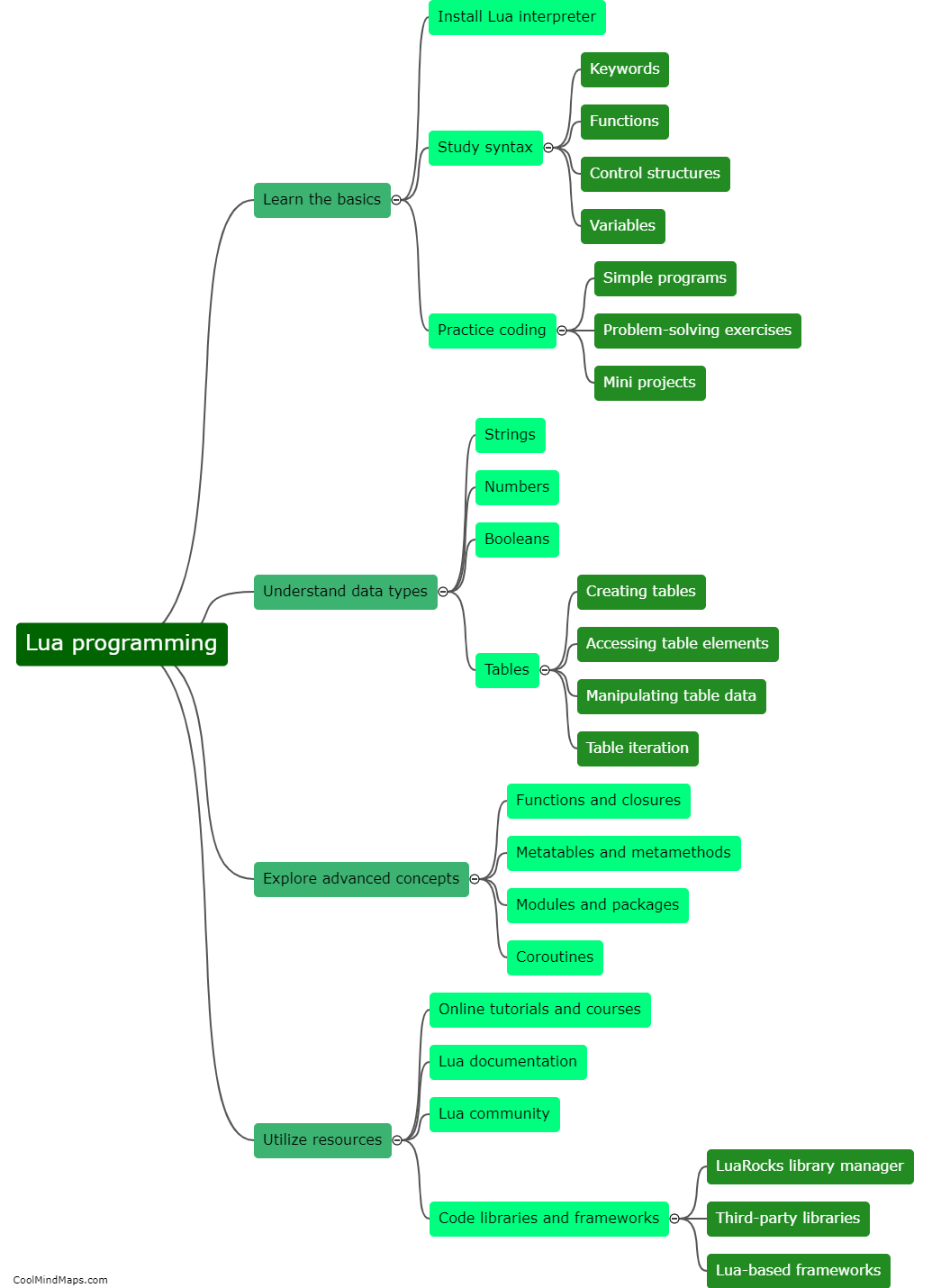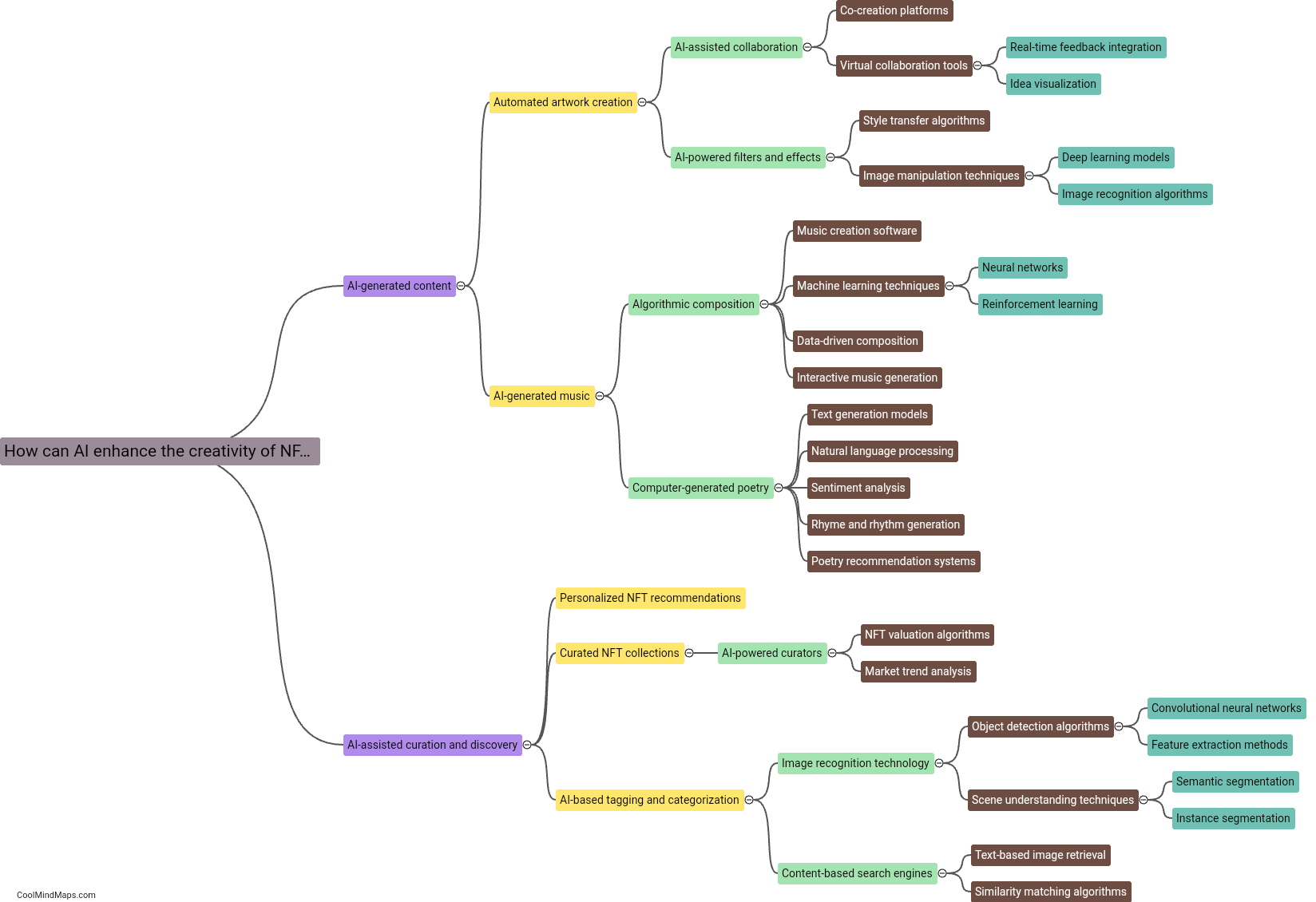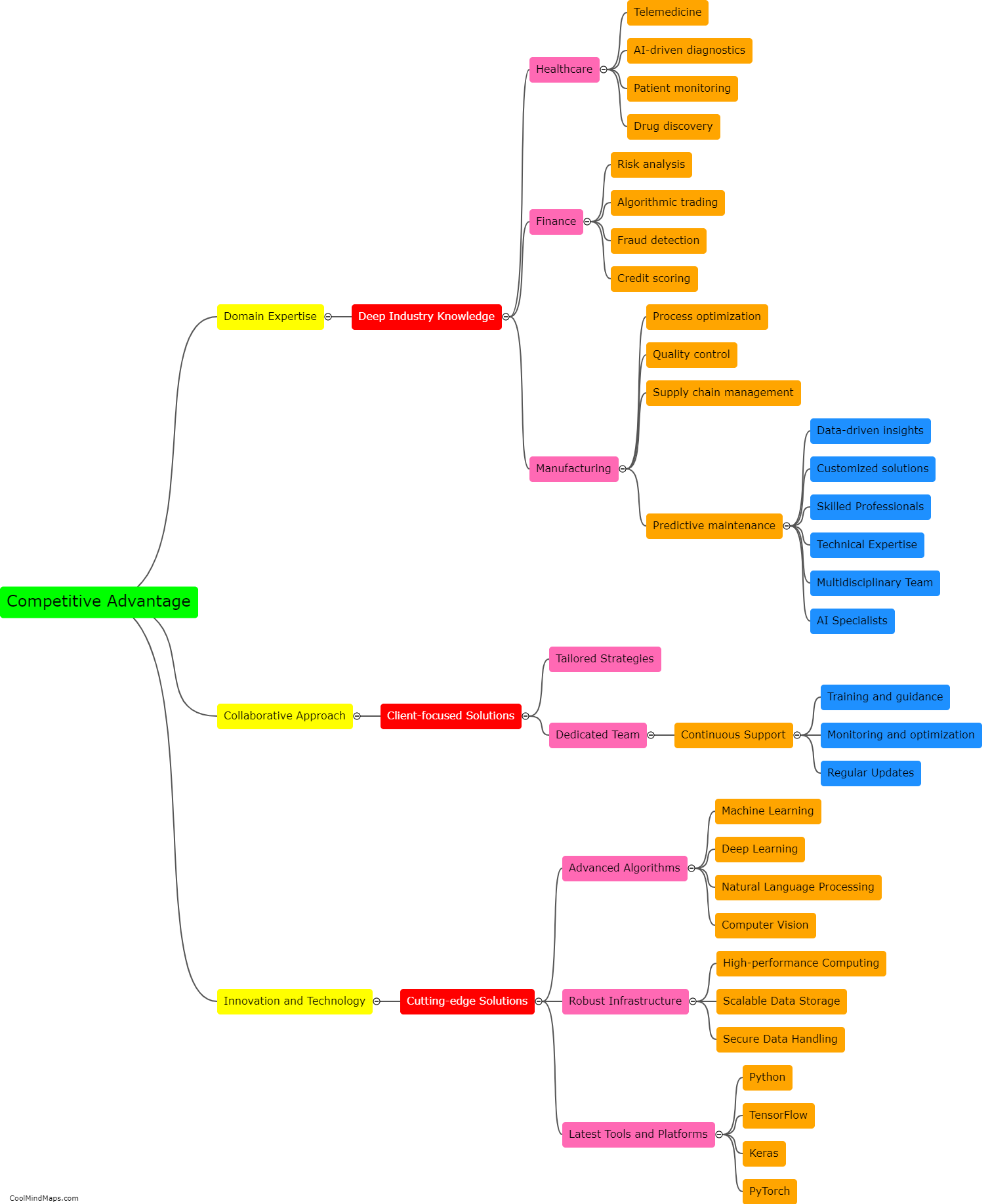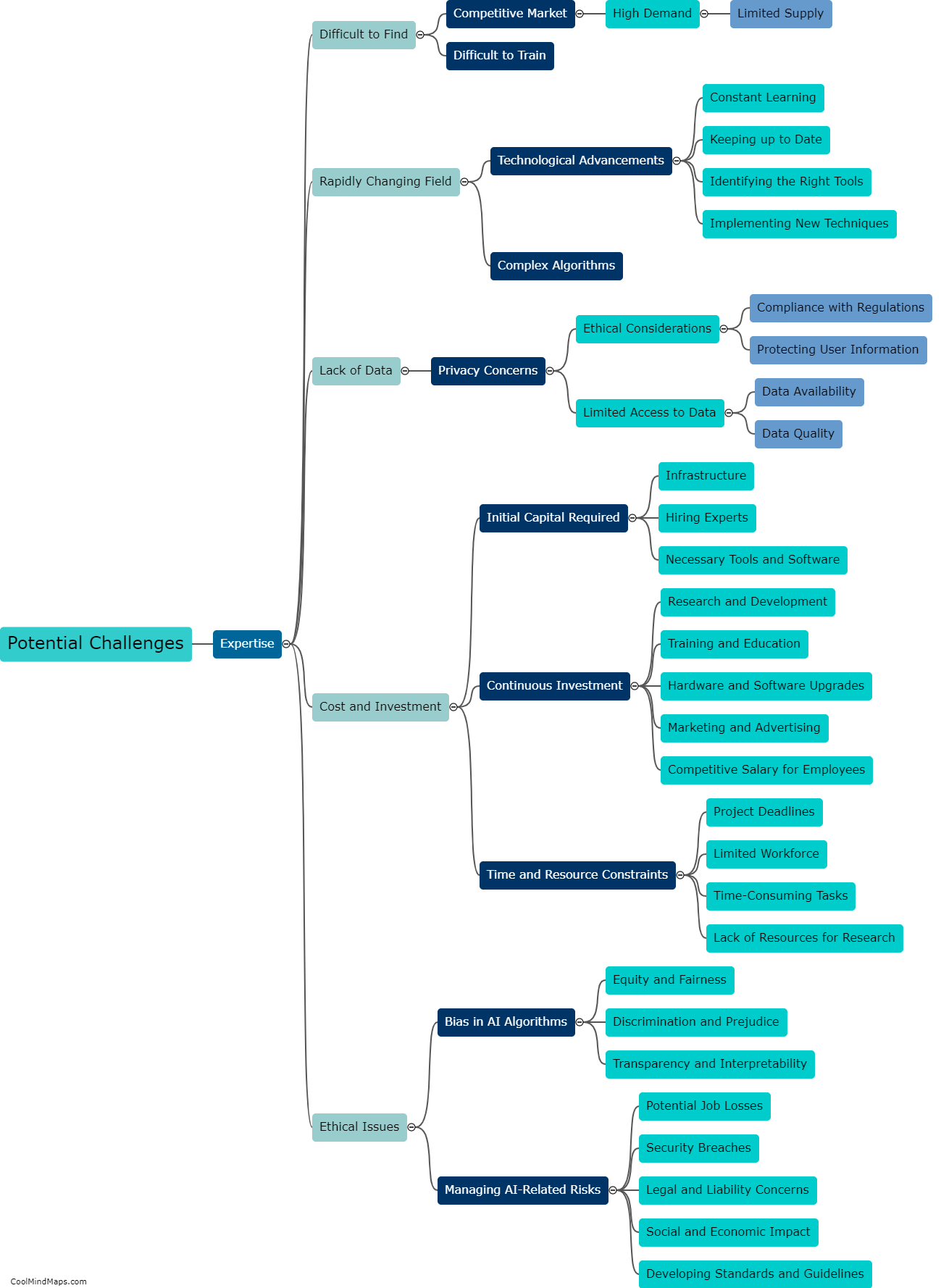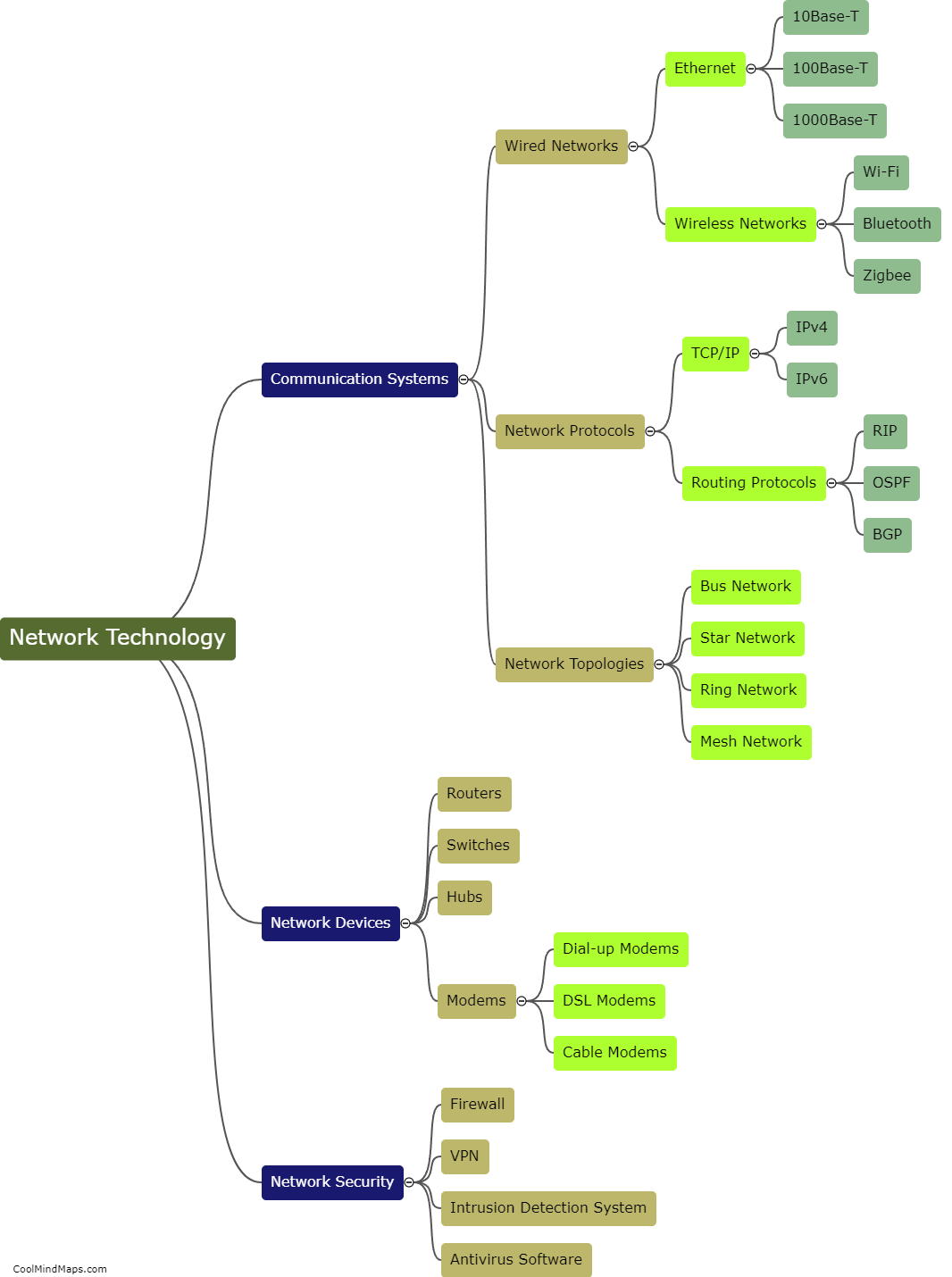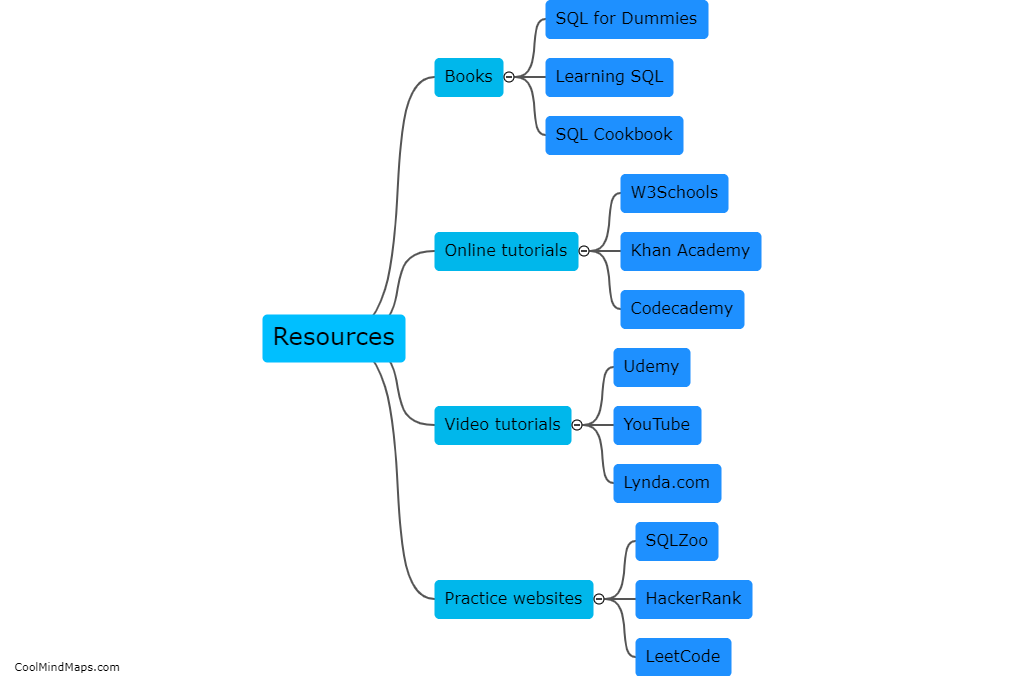What is the OSI model?
The OSI (Open Systems Interconnection) model is a conceptual framework that was developed by the International Organization for Standardization (ISO) to standardize and facilitate communication between different computer systems. It is composed of seven layers, each representing a specific function that contributes to the overall process of transmitting data across a network. These layers, from bottom to top, are Physical, Data Link, Network, Transport, Session, Presentation, and Application. The purpose of the OSI model is to ensure that different components of a network can communicate efficiently and reliably, regardless of their underlying technology or architecture. It provides a common language and framework for network designers and developers to understand and troubleshoot issues, as well as a blueprint for implementing interoperable network protocols and standards.
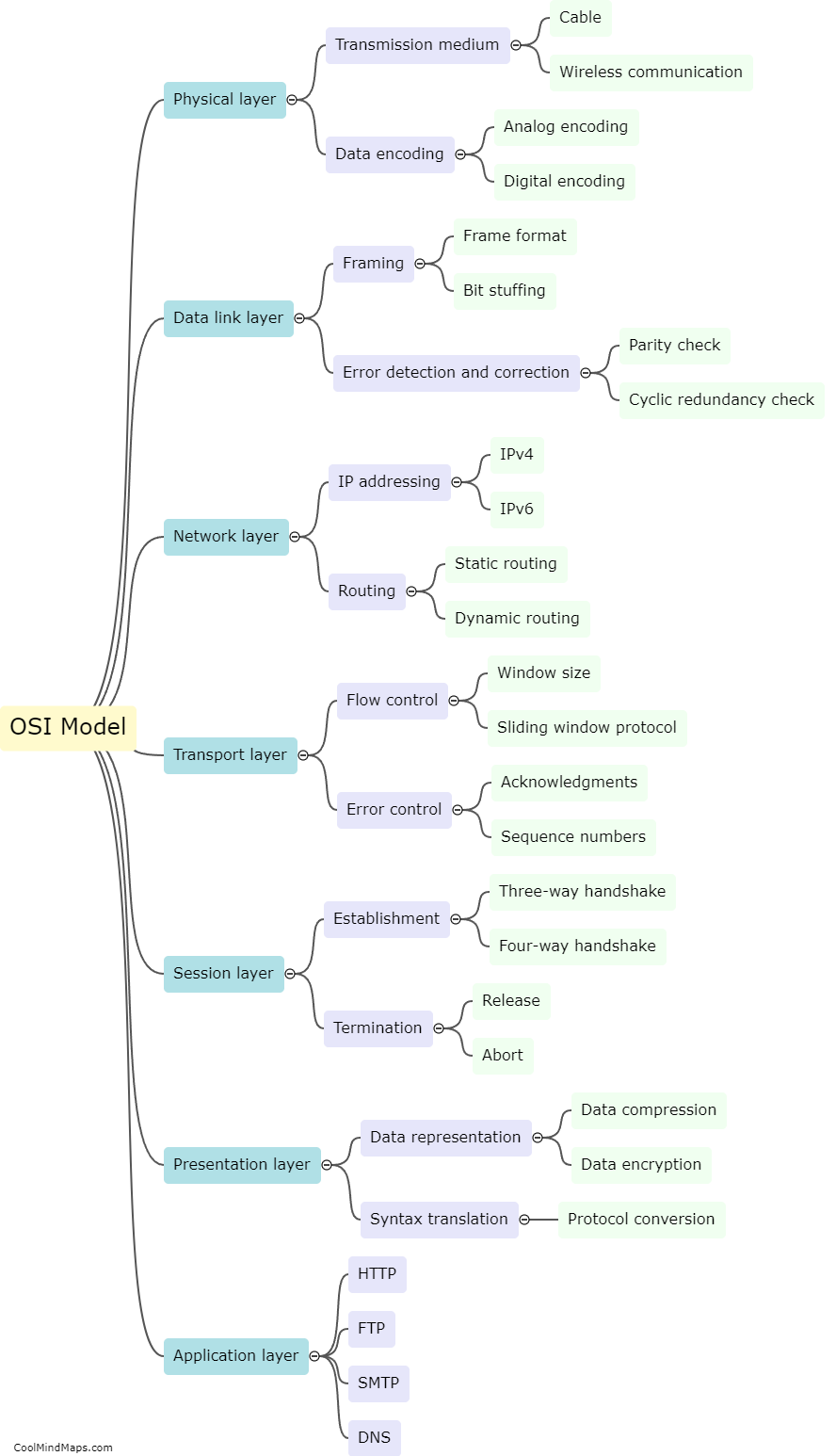
This mind map was published on 3 February 2024 and has been viewed 102 times.

